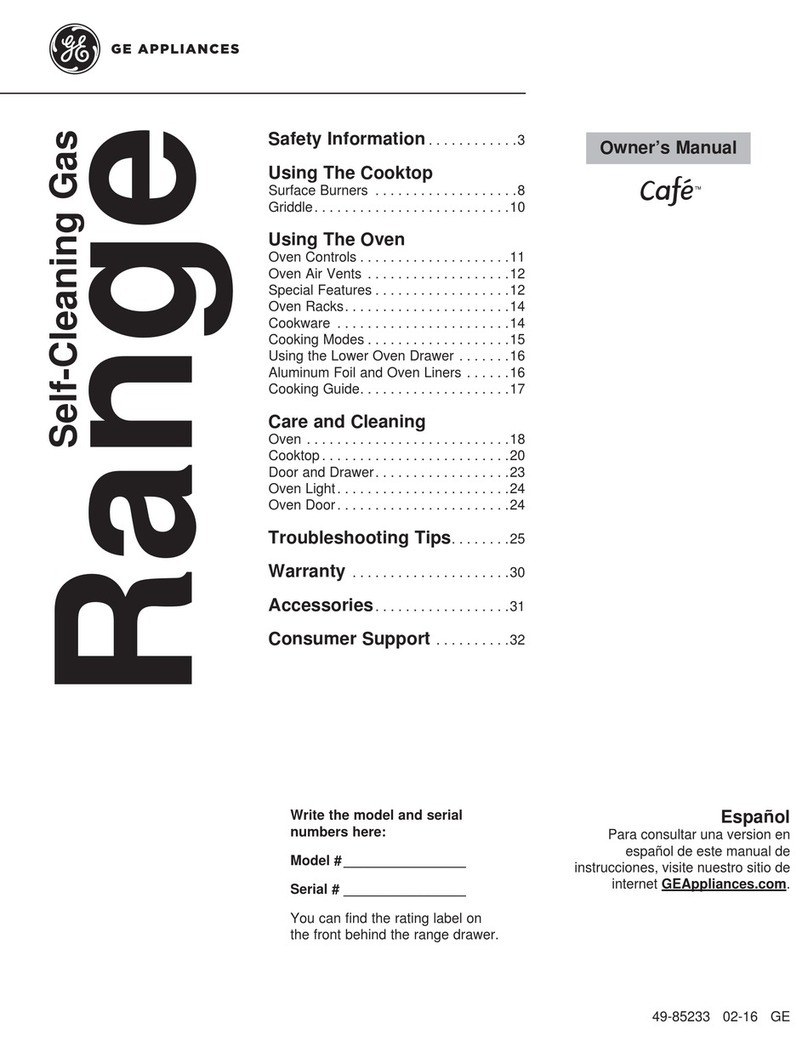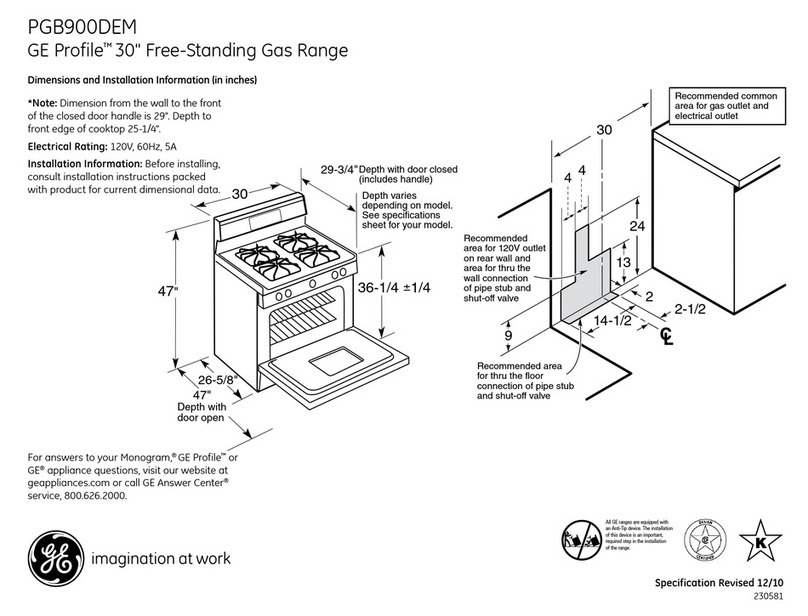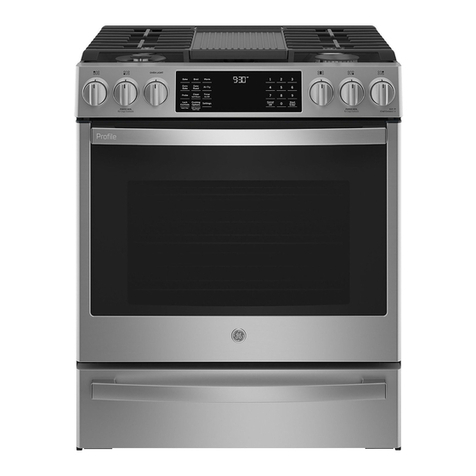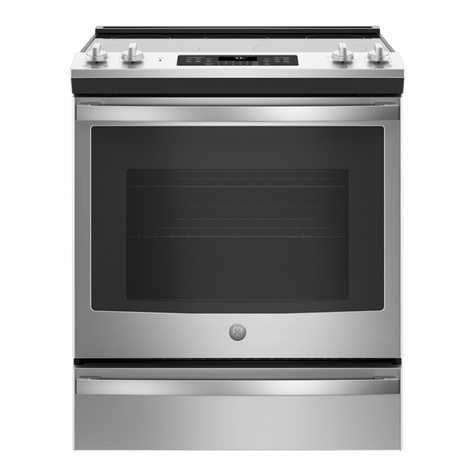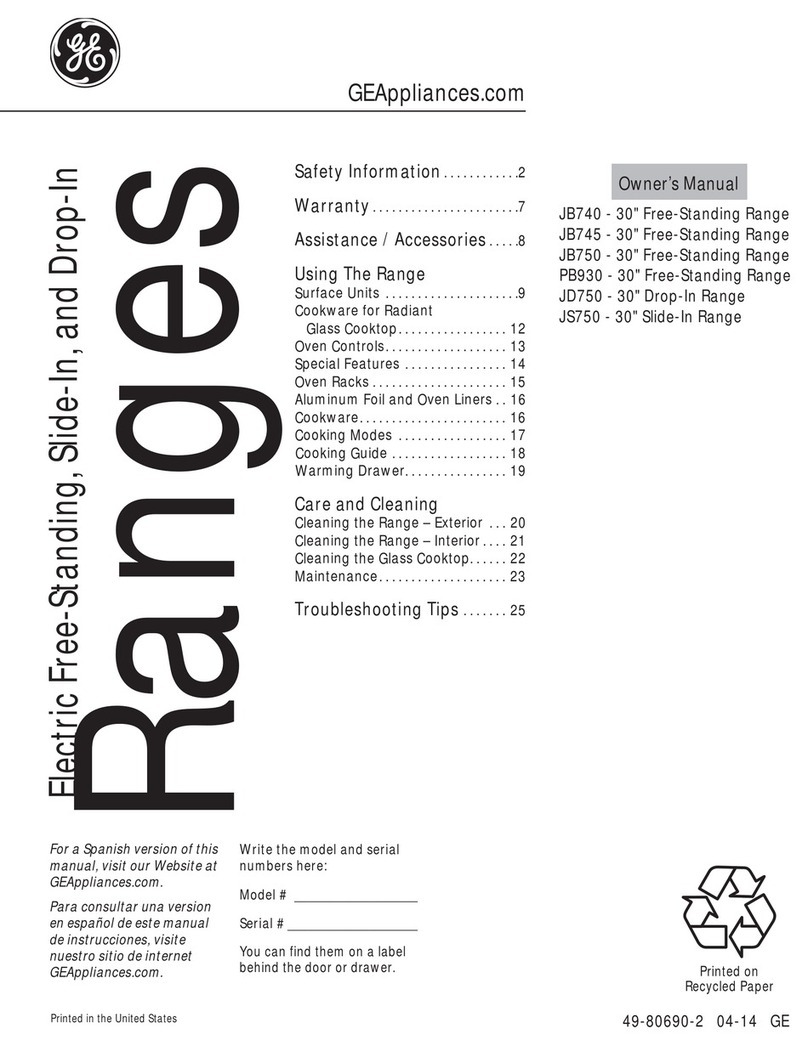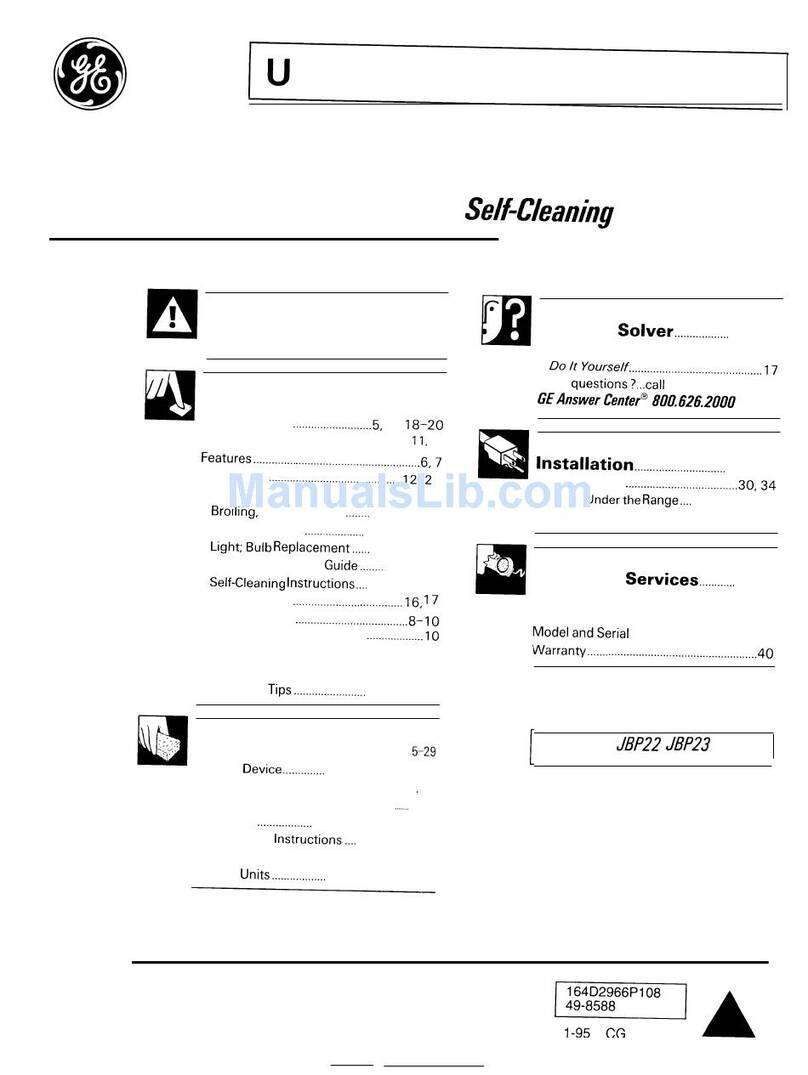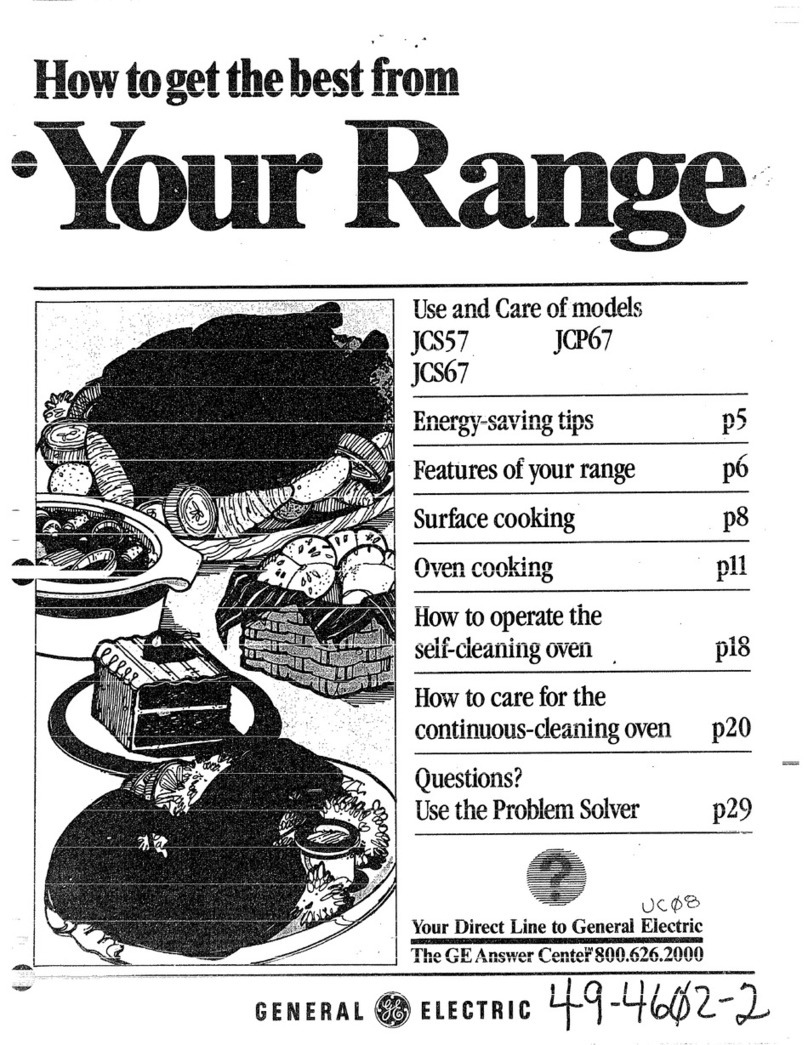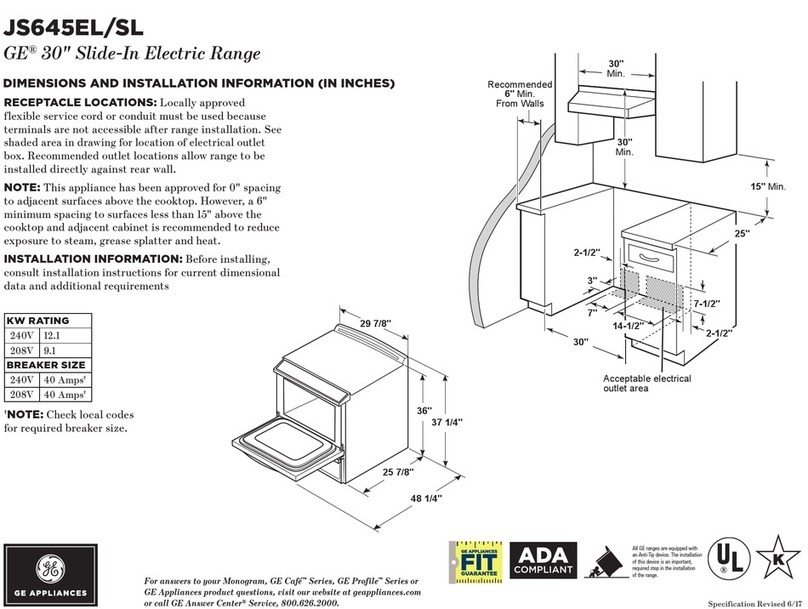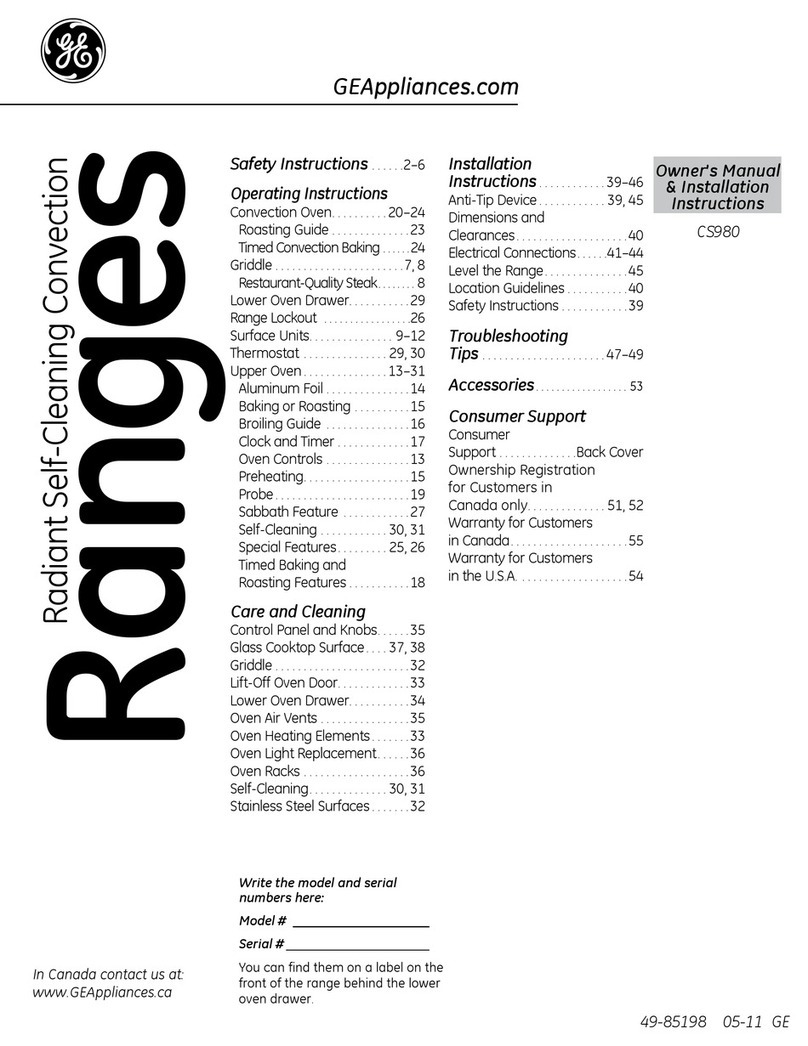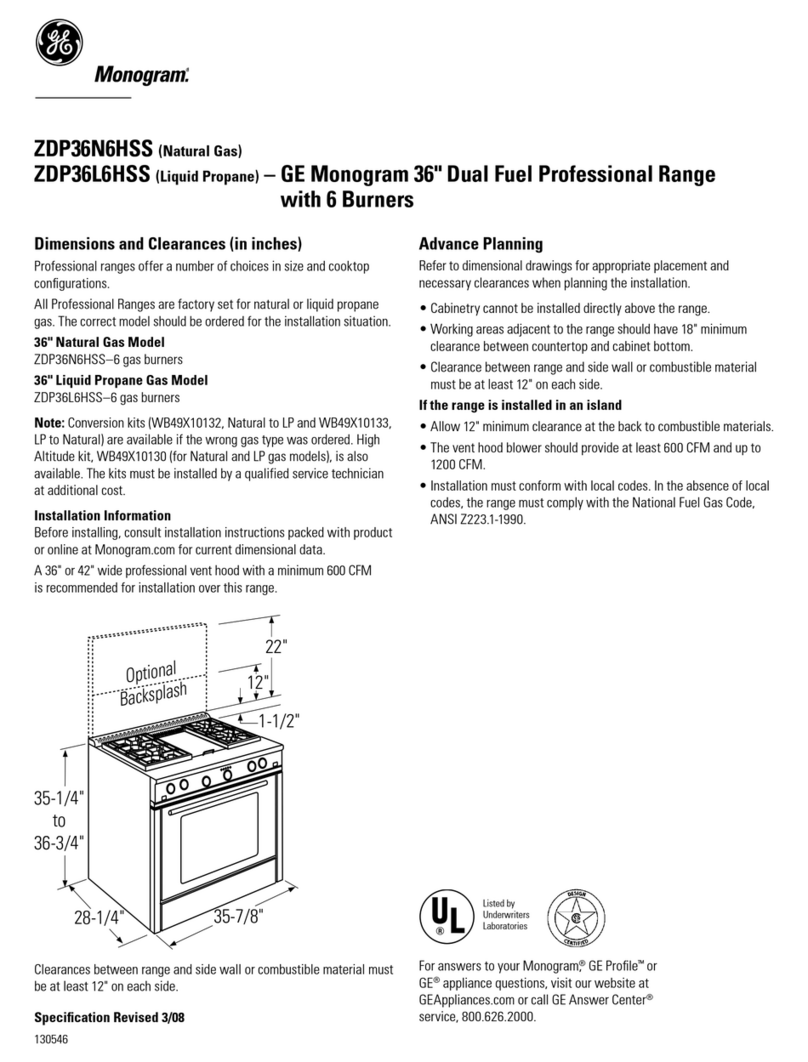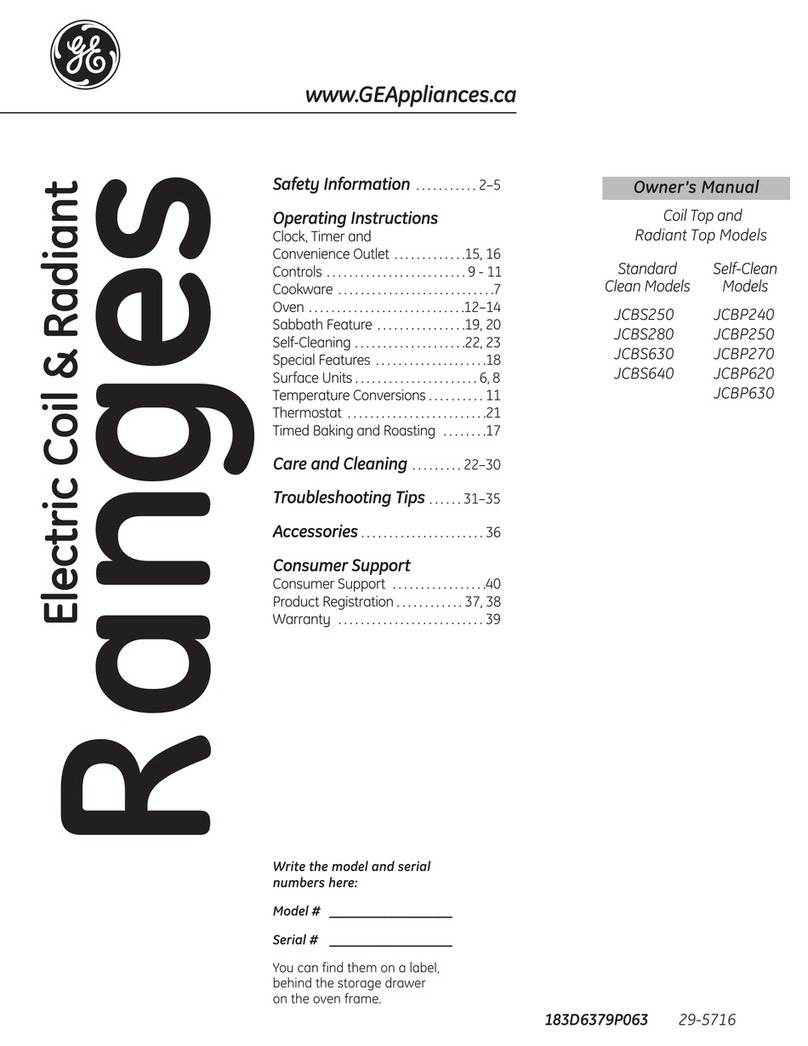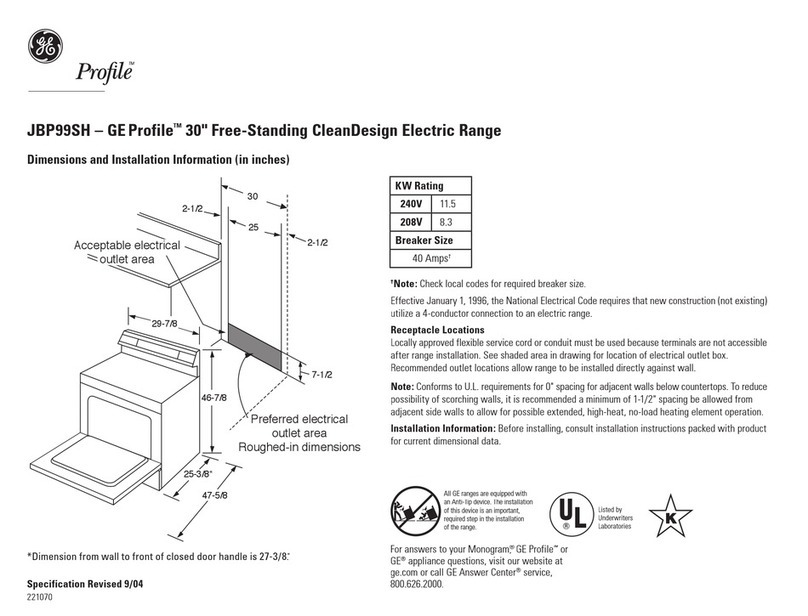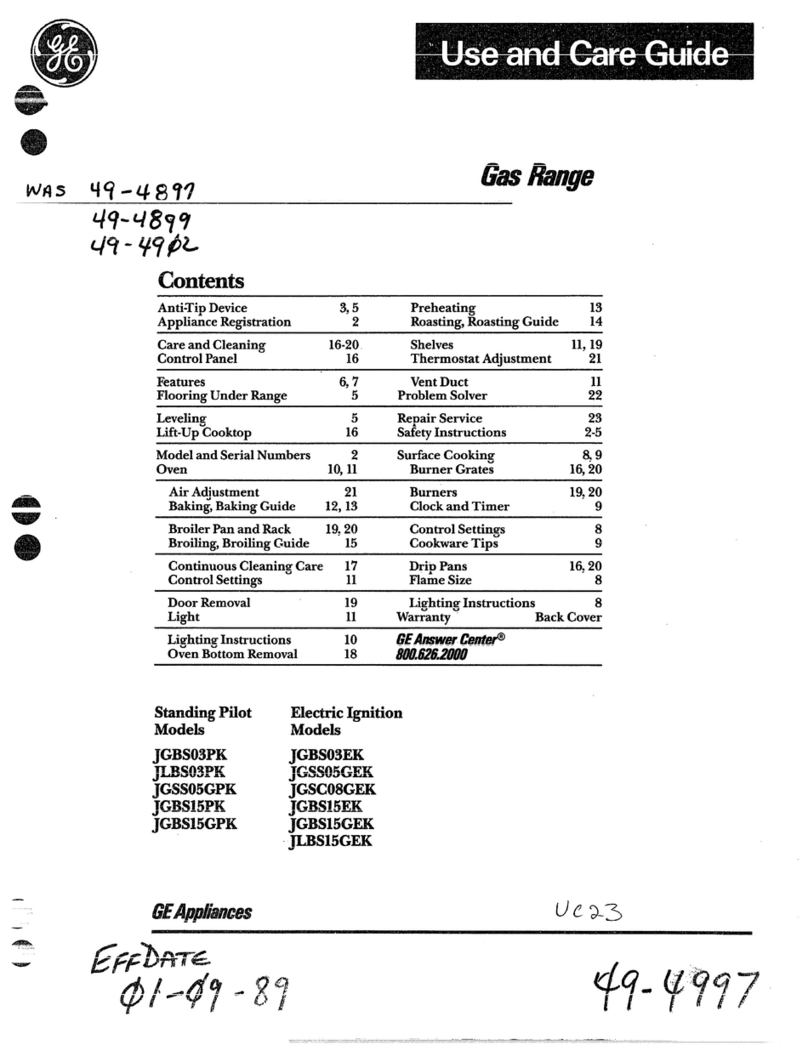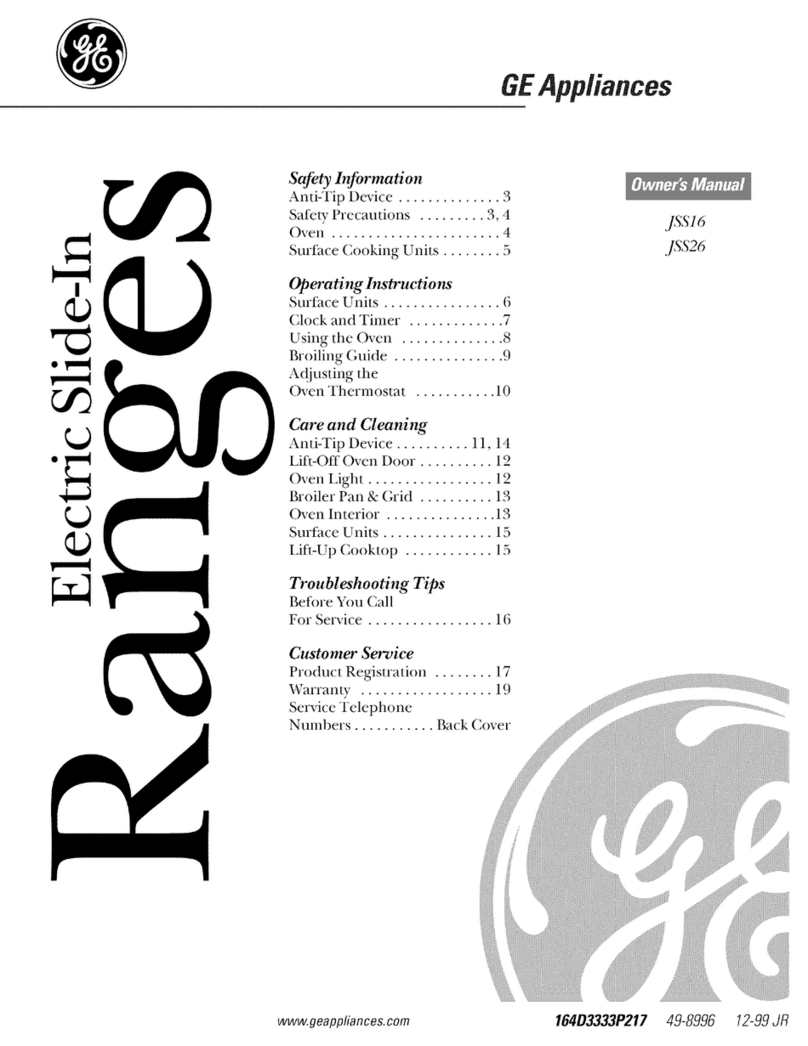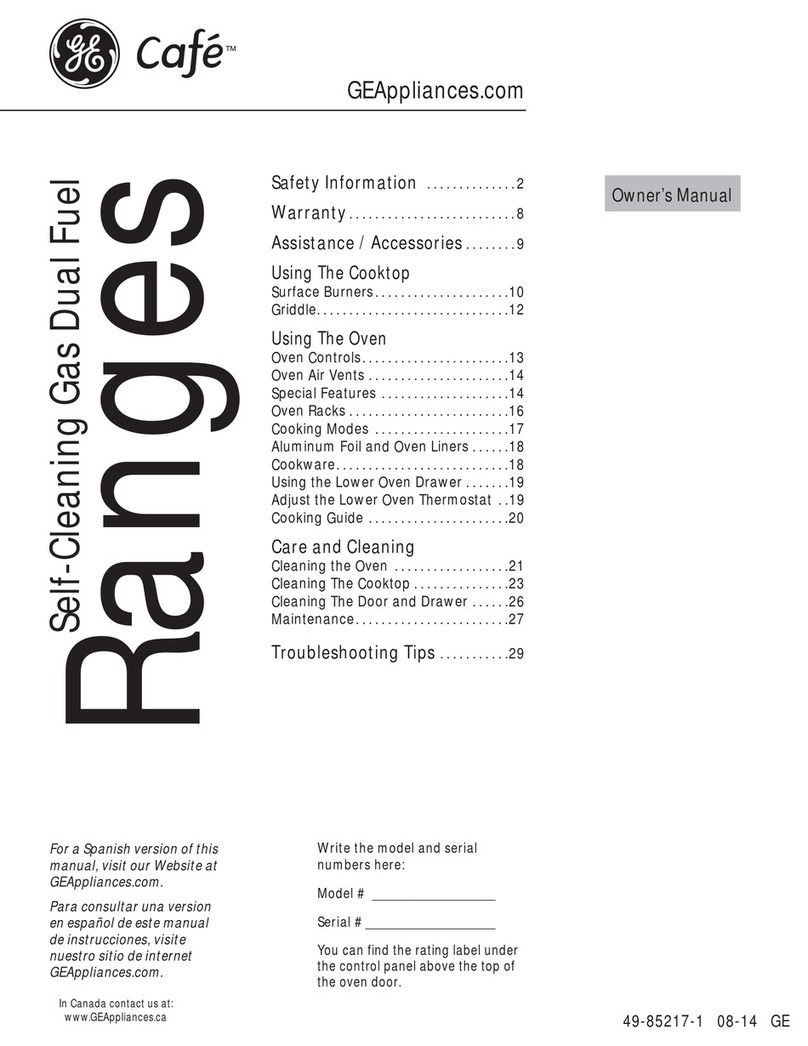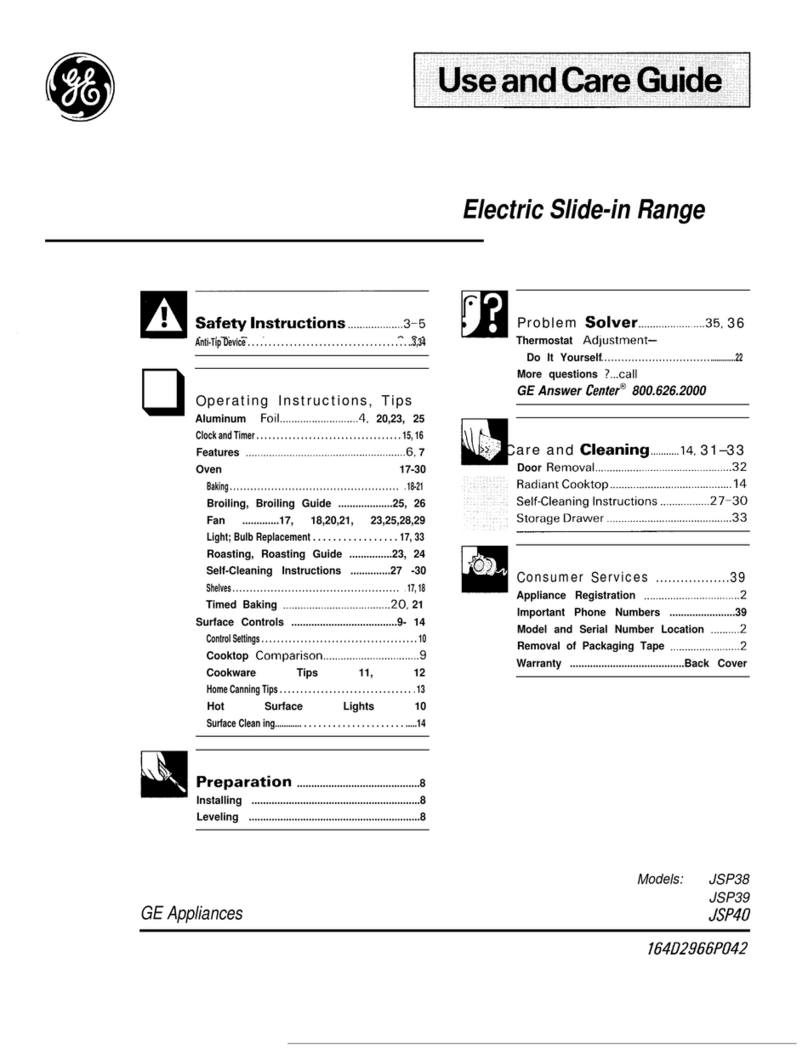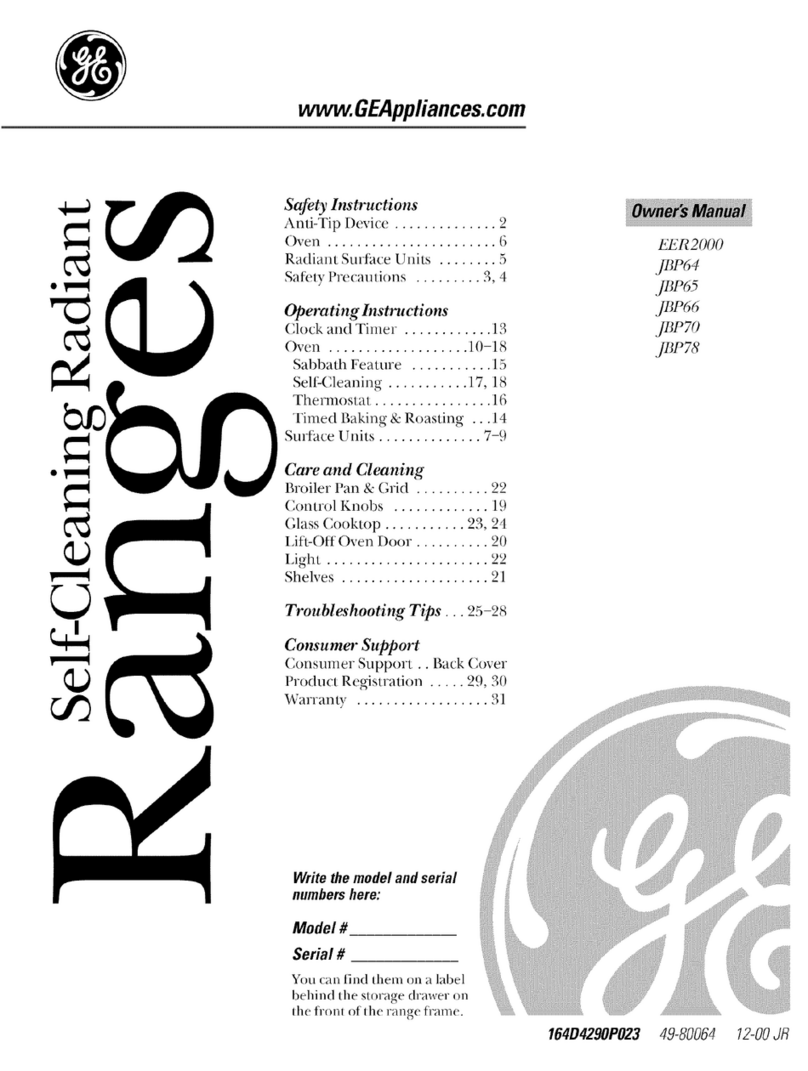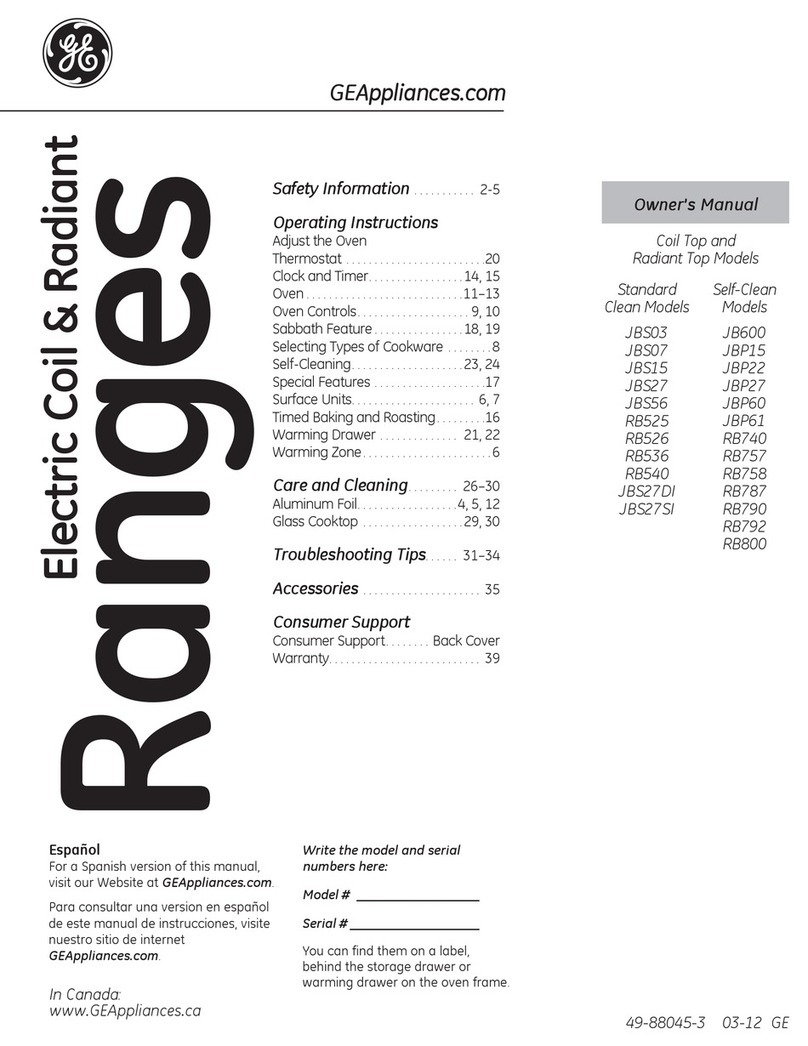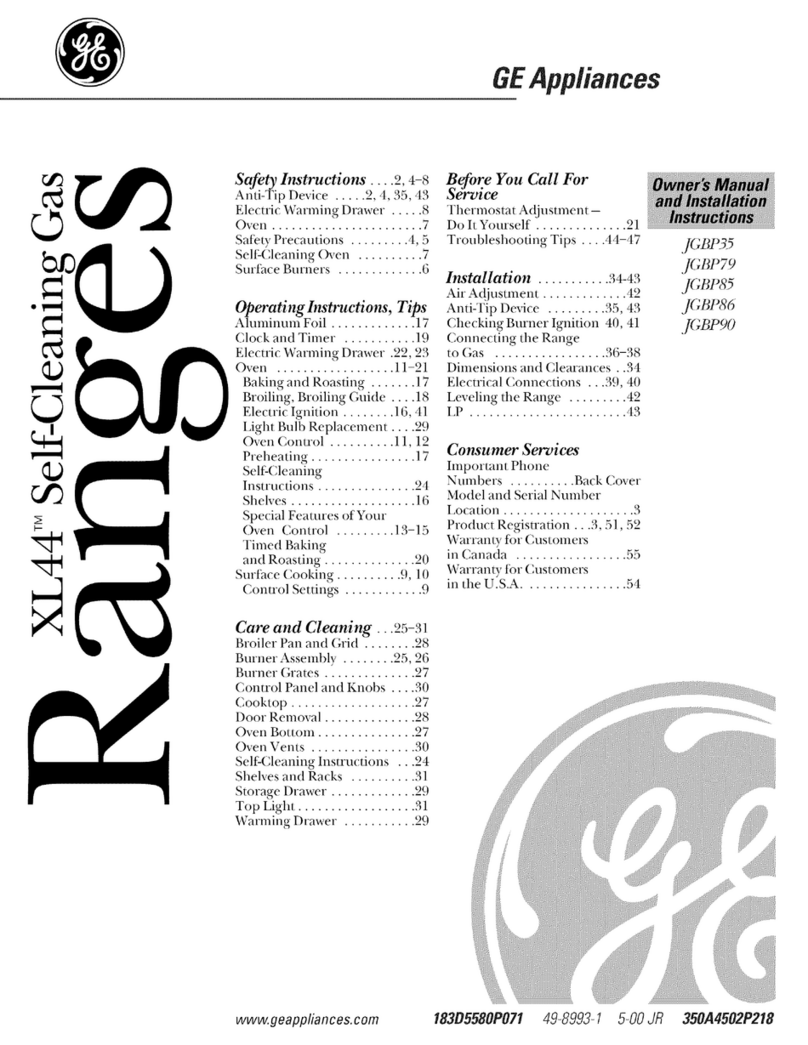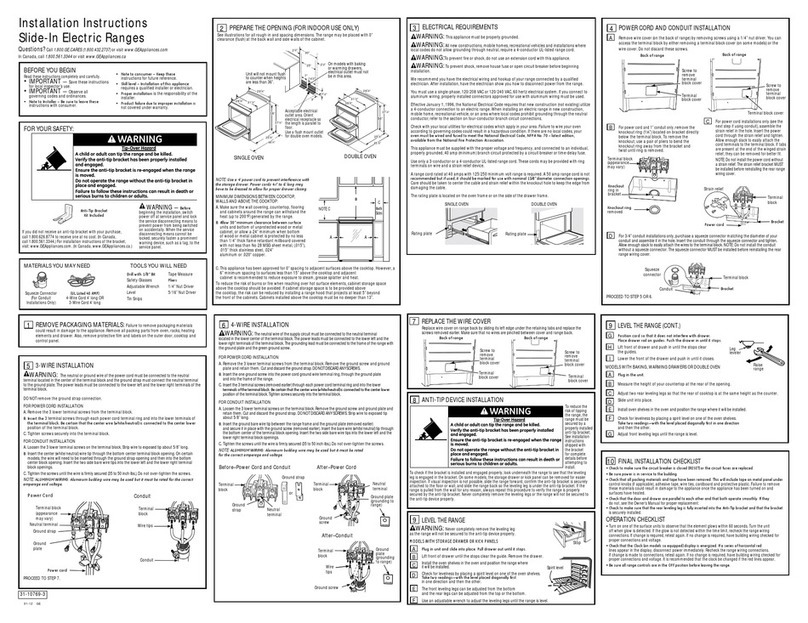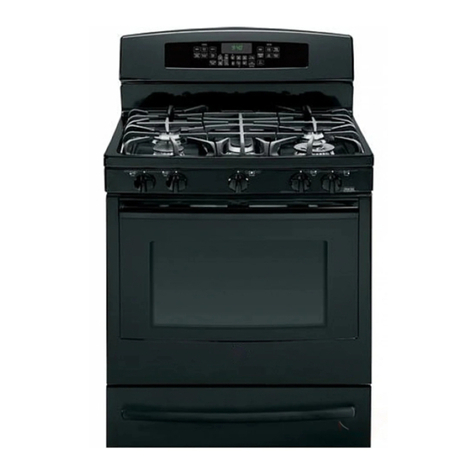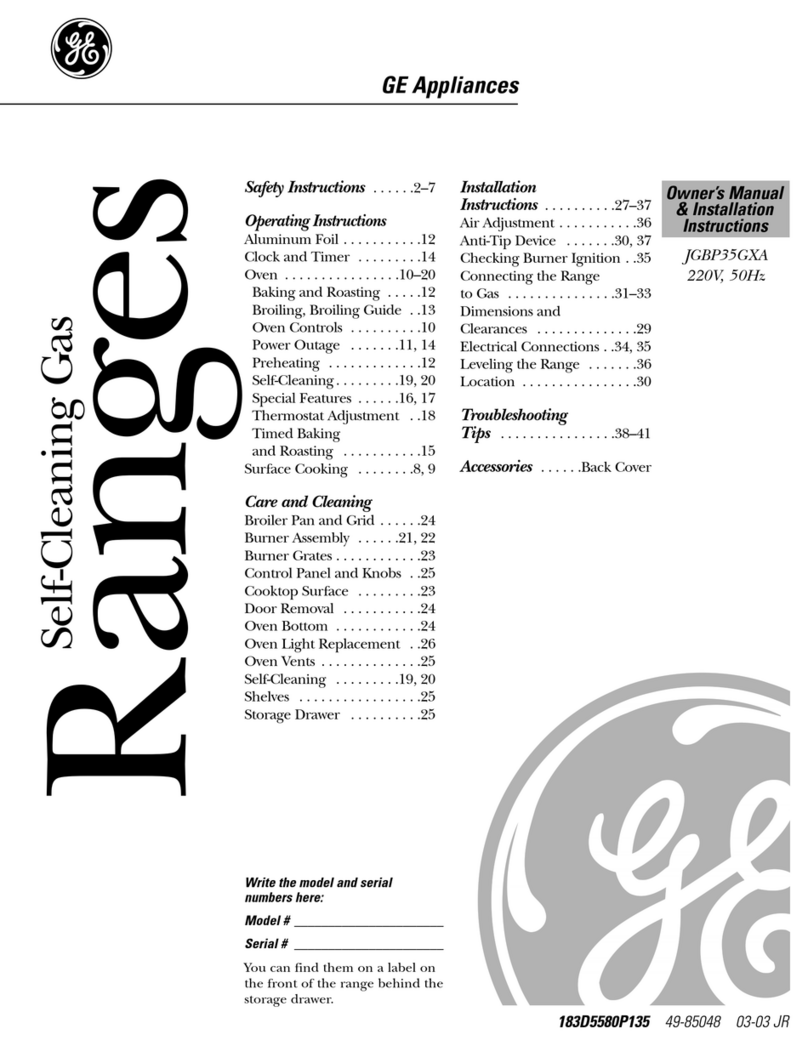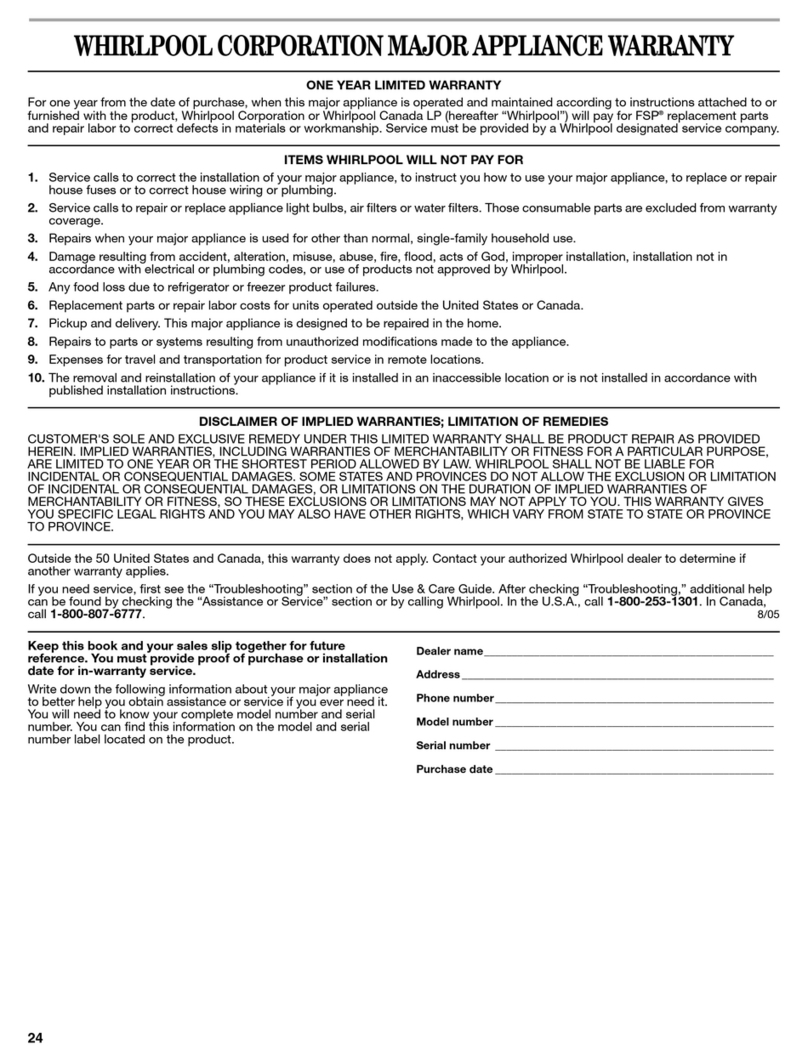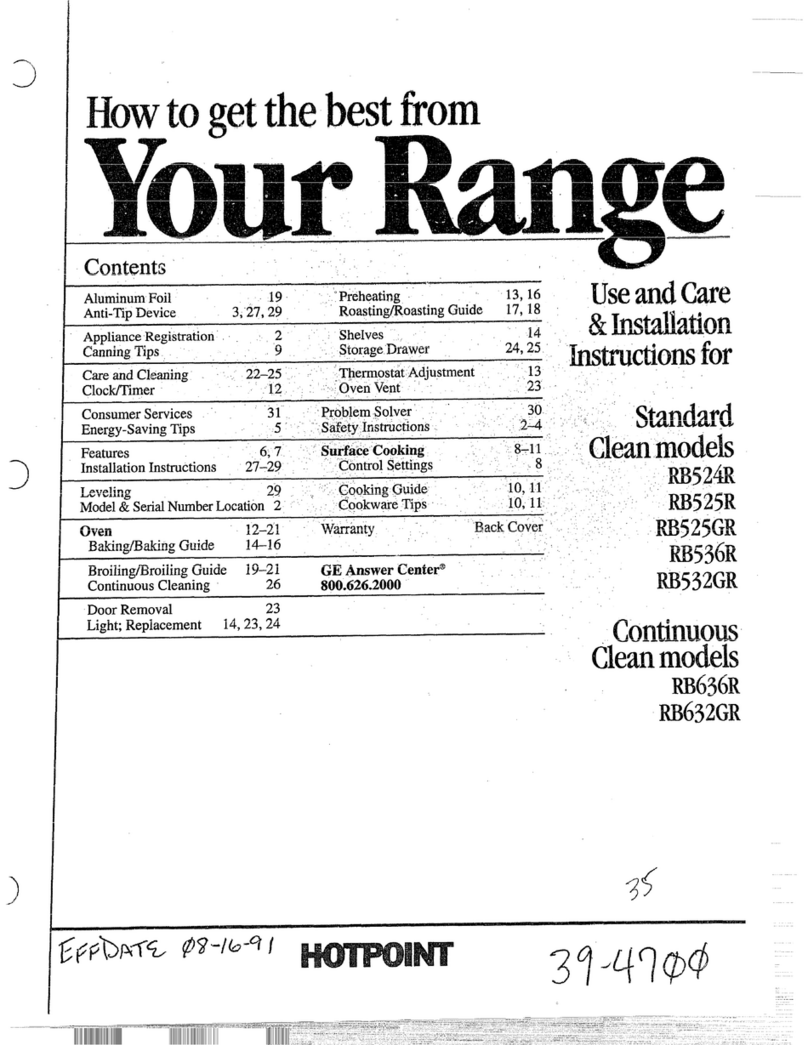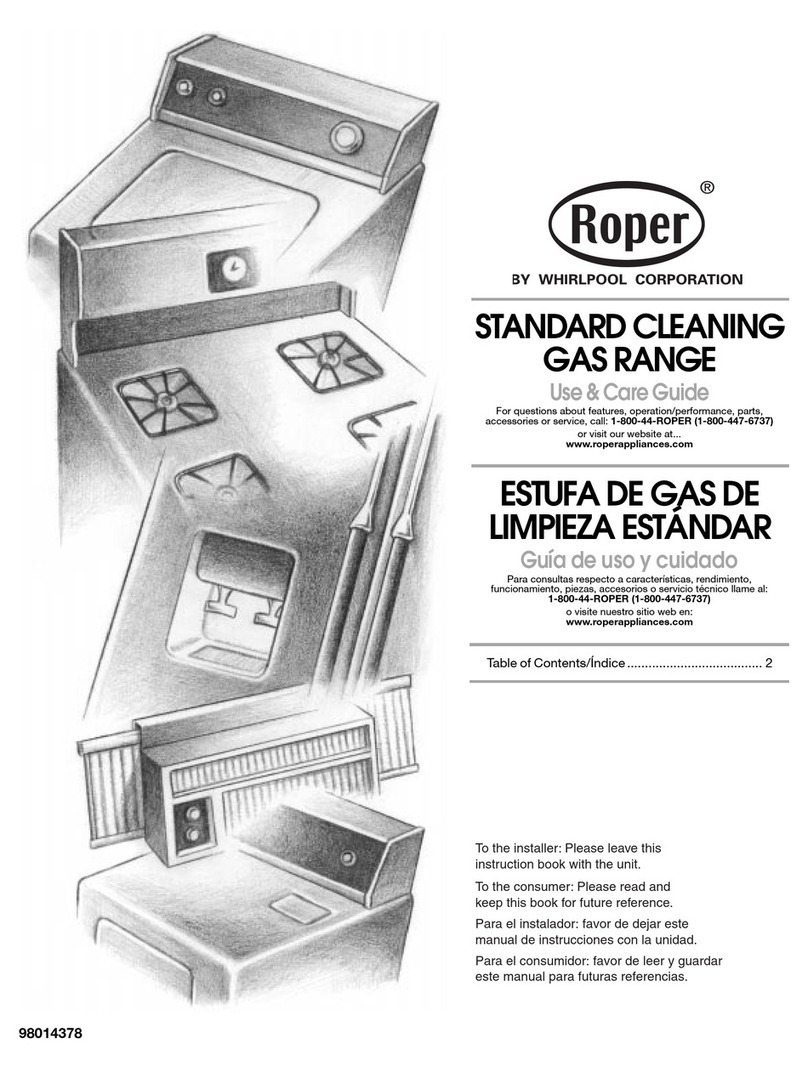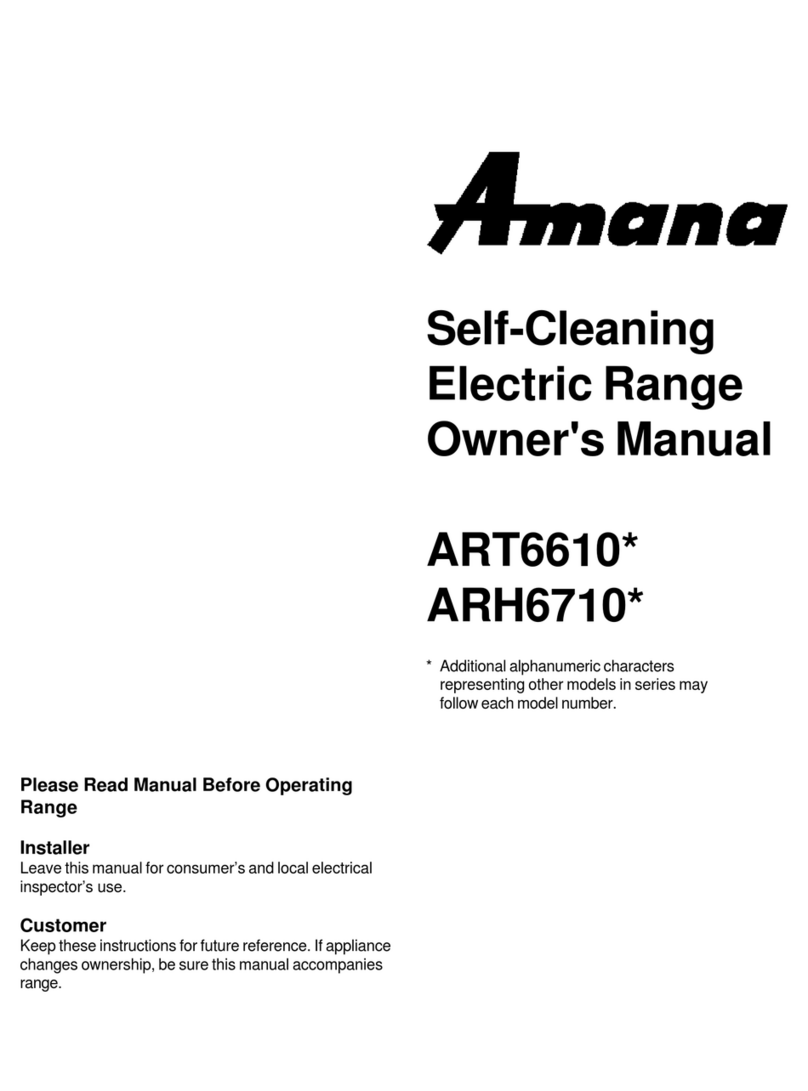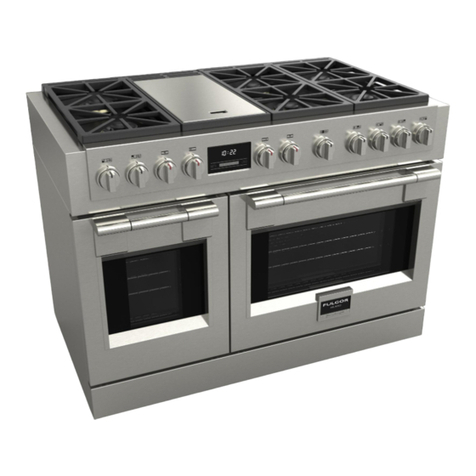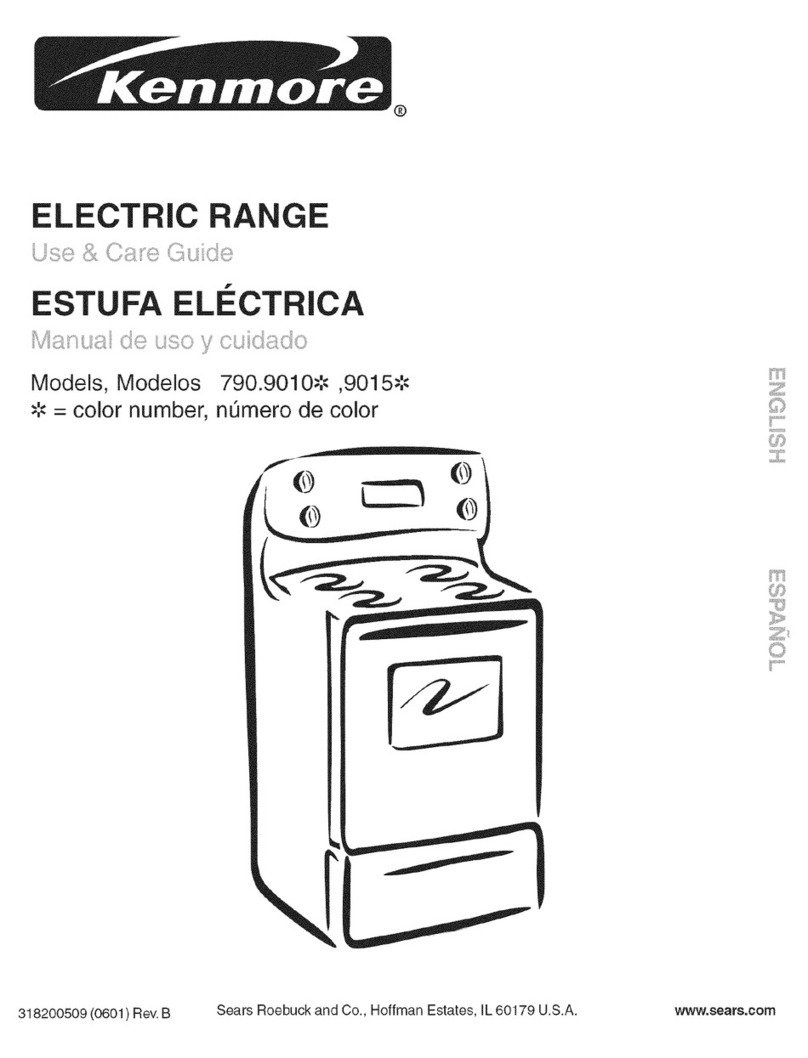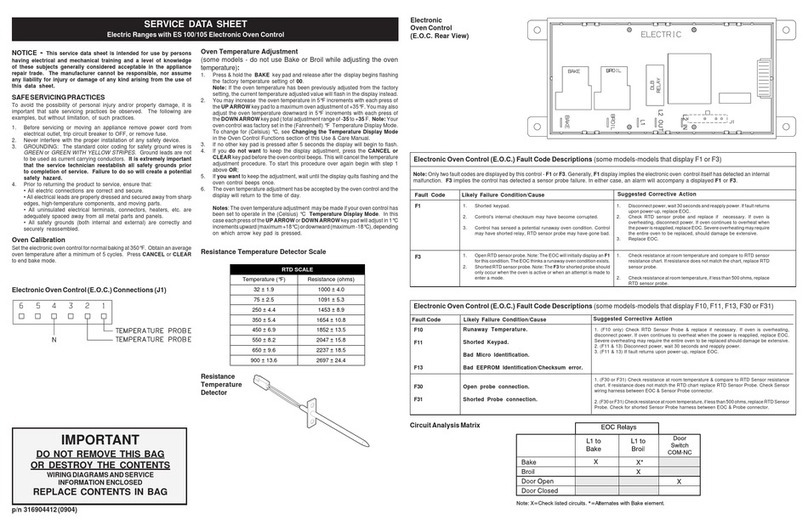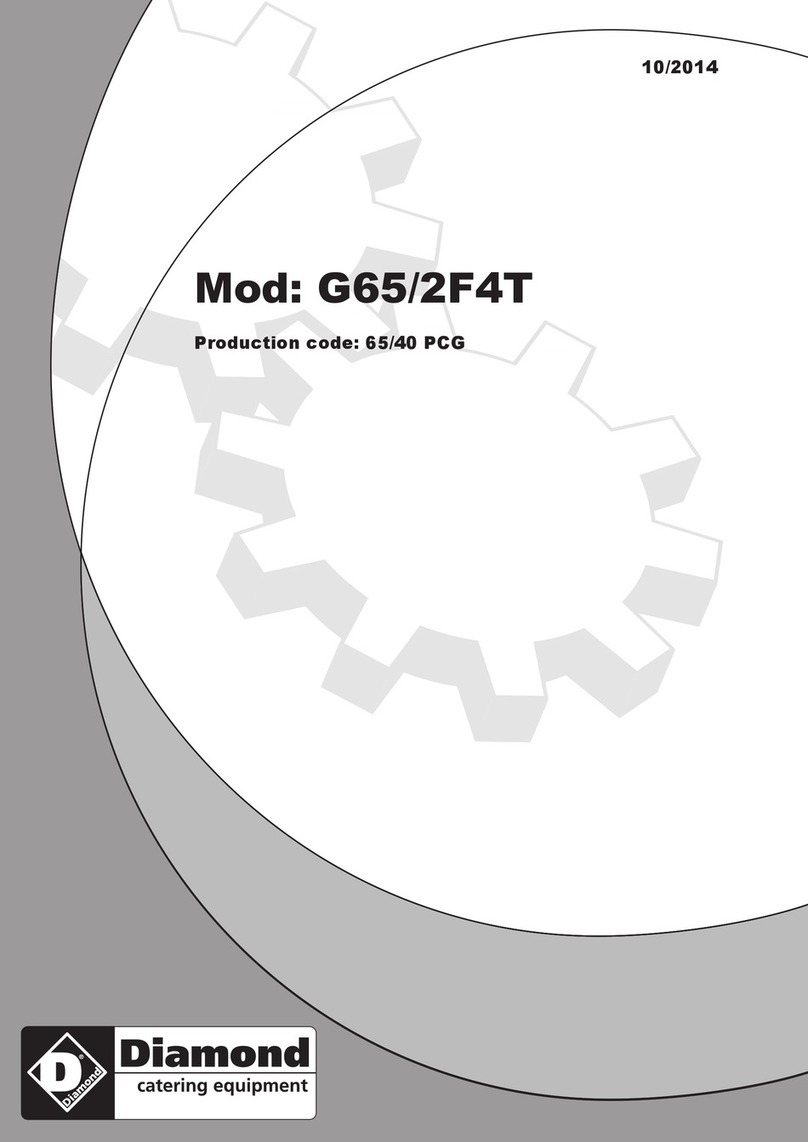
3
Important Safety Instructions
IMPORTANT SAFETY INSTRUCTIONS
Read all instructions before using your appliance.
When using electrical appliances, basic safety
precautions should be followed, including the
following:
• Use this appliance only for its intended use
as described in this guide.
• Be sure your appliance is properly installed
and grounded by a qualified technician in
accordance with the provided installation
instructions.
• Don’t attempt to repair or replace any part of
your range unless it is specifically
recommended in this guide. All other servicing
should be referred to a qualified technician.
• Before performing any service, DISCONNECT
THE RANGE POWER SUPPLY AT THE
HOUSEHOLD DISTRIBUTION PANEL BY
REMOVING THE FUSE OR SWITCHING OFF
THE CIRCUIT BREAKER.
WARNING—All ranges can tip and
injury could result. To prevent accidental tipping of
the range, attach it to the floor by
installing the Anti-Tip device
supplied. The device engages one of
the rear leveling legs (see Installation
Instructions). To check if the device
is installed properly, carefully tip the
range forward.
If you pull the range out from the wall
for any reason, make sure the rear leg
is returned to its position in the device when you
push the range back.
• Do not leave children alone—children should
not be left alone or unattended in an area where an
appliance is in use. They should never be allowed
to sit or stand on any part of the appliance.
• Don’t allow anyone to climb, stand or hang on
the door or range top. They could damage the
range and even tip it over, causing severe
personal injury.
• CAUTION: ITEMS OF INTEREST TO
CHILDREN SHOULD NOT BE STORED IN
CABINETS ABOVE A RANGE OR ON THE
BACKSPLASH OF A RANGE—CHILDREN
CLIMBING ON THE RANGE TO REACH
ITEMS COULD BE SERIOUSLY INJURED.
• Never wear loose-fitting or hanging garments
while using the appliance. Flammable material
could be ignited if brought in contact with hot
heating elements and may cause severe burns.
• Use only dry pot holders—moist or damp pot
holders on hot surfaces may result in burns from
steam. Do not let pot holders touch hot heating
elements. Do not use a towel or other bulky cloth.
• For your safety, never use your appliance for
warming or heating the room.
• Storage in or on appliance—Flammable
materials should not be stored in an oven or near
surface units.
• Keep hood and grease filters clean to maintain
good venting and to avoid grease fires.
• Do not let cooking grease or other flammable
materials accumulate in or near the range.
• Do not use water on grease fires.
Never pick up a flaming pan.
Smother flaming pan on surface unit
by covering pan completely with well-
fitting lid, cookie sheet or flat tray. Flaming grease
outside a pan can be put out by covering with
baking soda or, if available, a multi-purpose dry
chemical or foam type fire extinguisher.
• Do not touch heating elements or interior
surface of oven. These surfaces may be hot
enough to burn even though they are dark in
color. During and after use, do not touch, or let
clothing or other flammable materials contact
surface units, areas nearby surface units or any
interior area of the oven; allow sufficient time
for cooling first.
Potentially hot surfaces include the cooktop and
areas facing the cooktop, oven vent opening and
surfaces near the opening, and crevices around the
oven door. Remember: The inside surface of the
oven may be hot when the door is opened.
• When cooking pork, follow the directions
exactly and always cook the meat to an internal
temperature of at least 170°F. This assures that, in
the remote possibility that trichina may be present
in the meat, it will be killed and the meat will be
safe to eat.
(continued on next page)

